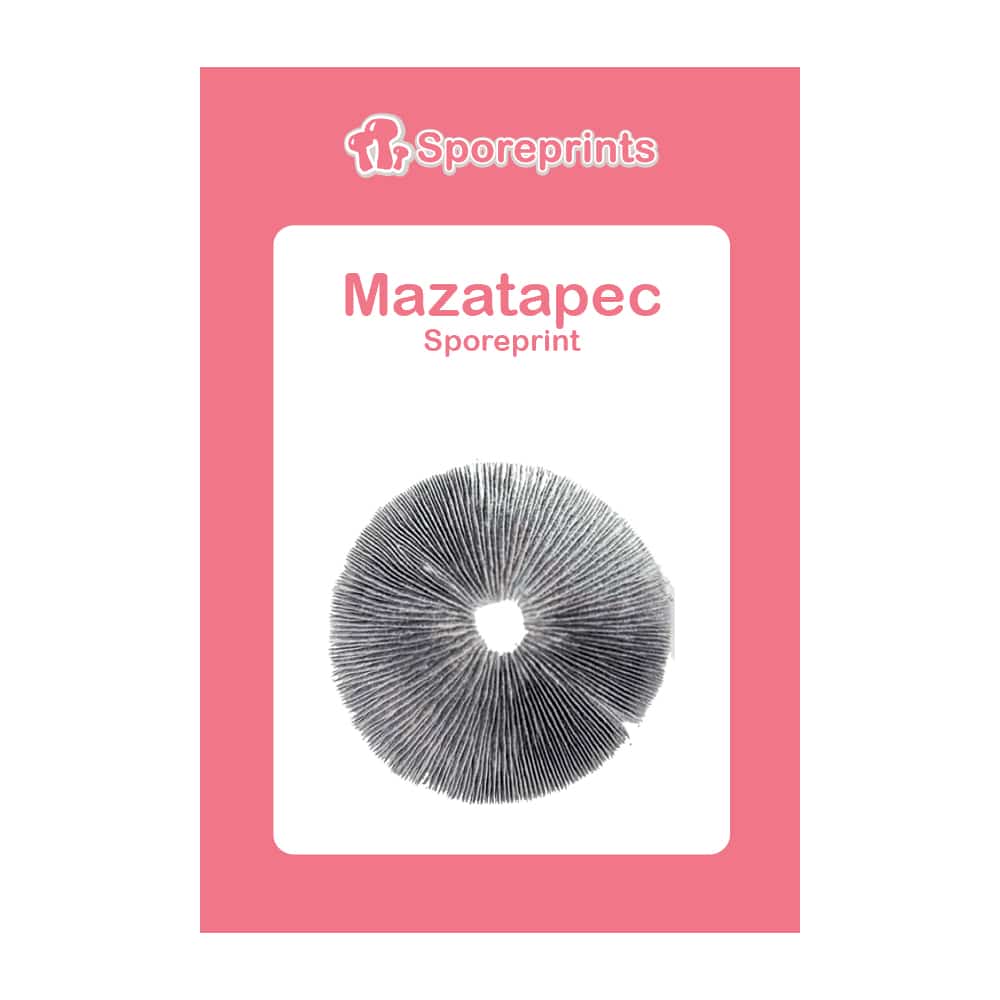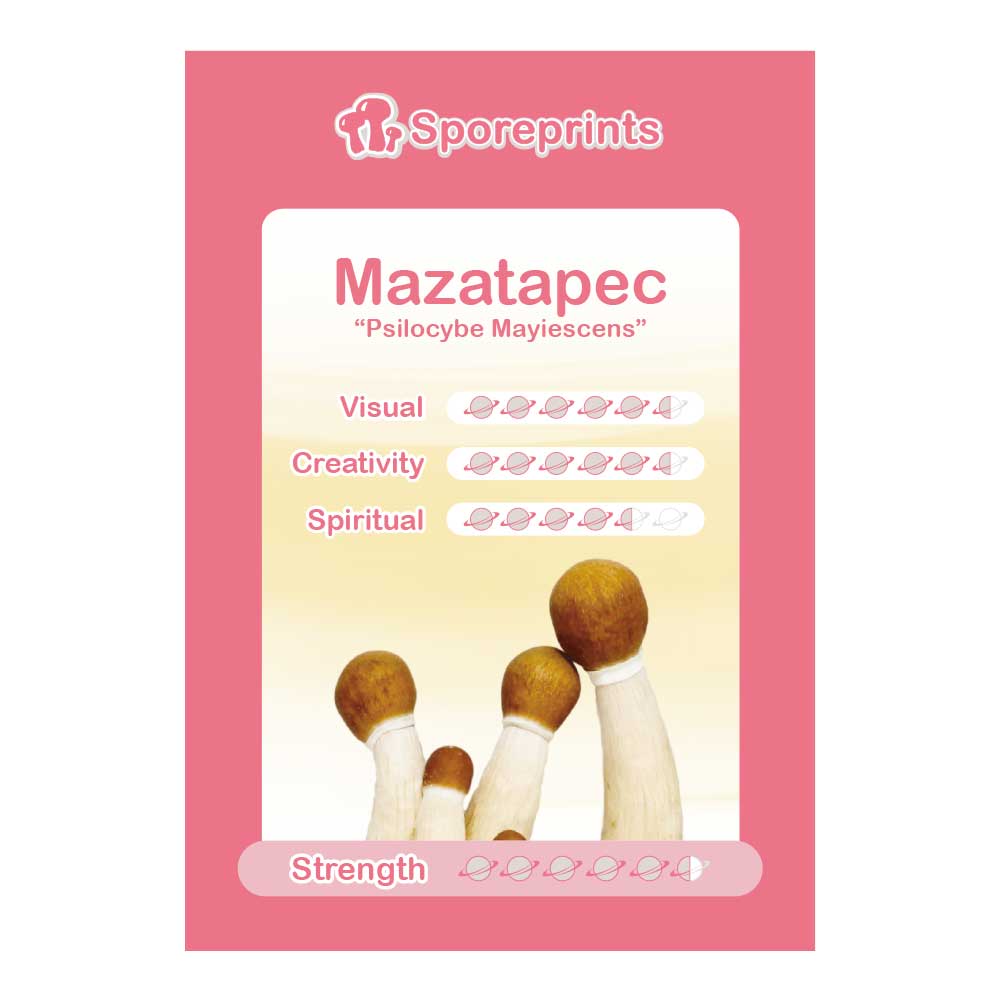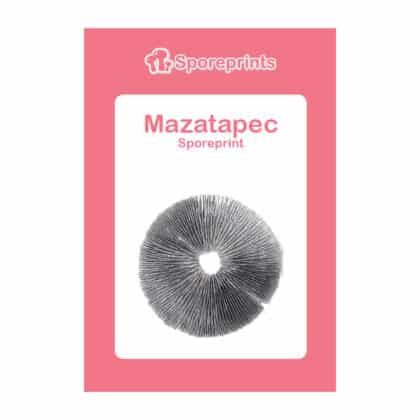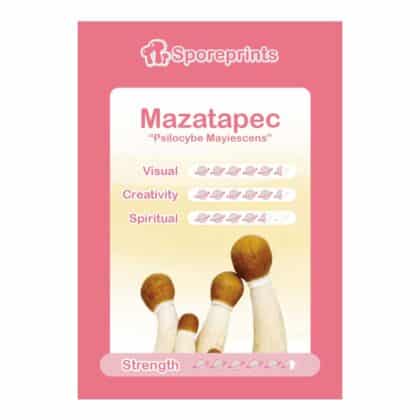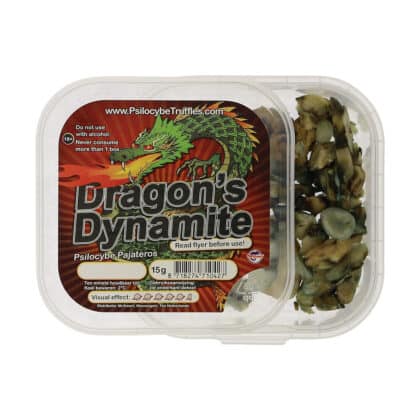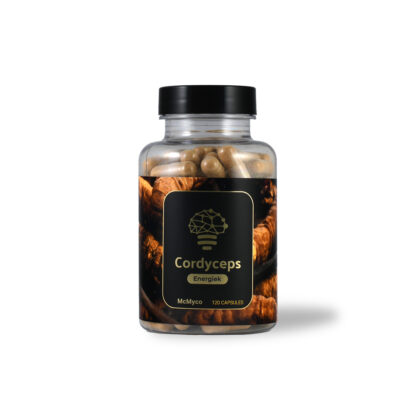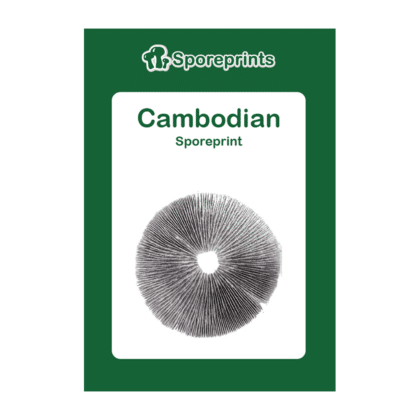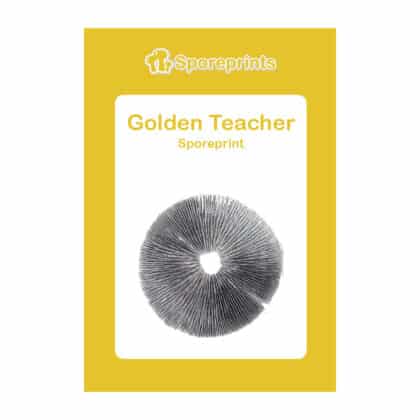Mazatapec Sporeprint
€18,95 Oorspronkelijke prijs was: €18,95.€14,21Huidige prijs is: €14,21. incl. btw
Discover the captivating Mazatapec Sporeprint by McSmart, expertly crafted for the discerning enthusiast. Immerse yourself in the intricate beauty of nature’s hidden wonders and experience why McSmart is celebrated for its exceptional sporeprint collection, tailored to meet the sophisticated tastes of true connoisseurs.
What Are Mazatapec Sporeprints?
Mazatapec Sporeprints are a fascinating gateway into the world of magic mushroom cultivation. These sporeprints hold the genetic foundation of Mazatapec mushrooms, a strain celebrated for its unique features and historical importance in indigenous rituals. A sporeprint is a collection of spores carefully deposited on a sterile surface, allowing enthusiasts to cultivate and study these remarkable fungi.
Sporeprints offer more than just a means to grow mushrooms—they provide a deeper understanding of the natural processes behind fungal development. With Mazatapec Sporeprints, you can uncover the intricate patterns of nature and delve into the mysteries of mycology. They are perfect for anyone passionate about nature, science, or the psychedelic arts.
The History of Mazatapec Mushrooms
The origins of Mazatapec mushrooms can be traced to the Mazatec people of Mexico, who used these fungi in sacred ceremonies. The name “Mazatapec” honors this cultural heritage, blending the identity of the Mazatec people with the mushroom’s distinct characteristics. For centuries, these mushrooms played a key role in spiritual practices, helping individuals access heightened states of consciousness.
In modern times, the rediscovery of Mazatapec mushrooms has reignited interest in their study and cultivation. Sporeprints allow enthusiasts to engage with this rich history, preserving the legacy of these extraordinary fungi while exploring their scientific and cultural significance.
How to Use Mazatapec Sporeprints
Step 1: Prepare the Petri Dish
Start with a sterile Petri dish filled with agar, a nutrient-rich growth medium. You can prepare the agar yourself or purchase it pre-made. Open and handle the dish in a sterile environment to avoid contamination.
Step 2: Add the Spores
If using a spore liquid, extract it with a sterile syringe. If working with a sporeprint, gently scrape spores from the print onto the agar surface.
Step 3: Incubate the Spores
Seal the Petri dish and place it in a controlled environment where the spores can develop into mycelium. The incubation period varies from several days to weeks, depending on environmental conditions and the type of fungus.
Step 4: Purify the Mycelium
Once the mycelium covers a significant portion of the agar surface, select a healthy piece for further cultivation.
Step 5: Transfer the Mycelium
Using a sterile scalpel, cut a small section of mycelium, approximately 6 x 6 mm. This piece will serve as the starter for a new, clean culture.
Step 6: Inoculate a New Growth Medium
Transfer the cut mycelium to a fresh medium, such as another Petri dish with agar or another appropriate substrate. Handle all materials in sterile conditions to ensure success.
Cultivating Mazatapec mushrooms requires patience and precision, but the process offers rewarding insights into the fascinating world of fungi. Each step provides a deeper appreciation for mycology and the lifecycle of mushrooms.
The Components of Mazatapec Sporeprints
Each Mazatapec Sporeprint contains millions of spores, carefully collected and preserved on a sterile surface to ensure purity. These spores hold the genetic material necessary for cultivating Mazatapec mushrooms.
Microscopic in size, the spores serve as the foundation for developing a robust mycelium network—a crucial step in successful mushroom cultivation. With proper handling and care, Mazatapec Sporeprints offer the perfect starting point for exploring the captivating lifecycle of fungi.
Warning
Mazatapec mushrooms contain psilocybin and psilocin, psychoactive compounds known to induce altered states of consciousness, including hallucinations. Always handle and consume these substances responsibly. Keep them out of reach of children, and store them in a secure location.
Do you ship to my country?
We ship to most EU countries. You can find these in the table below. We ship all our EU packages with DHL, DPD or PostNL depending on the area. This way we can deliver the best service possible. You will always receive a track and trace code to track your package from door to door.
| Country | Delivery | Costs | Free shipping |
|---|---|---|---|
| Austria | 2 - 3 | €11,95 | €125,- |
| Belgium | 1 - 2 | €7,95 | €125,- |
| Bulgaria | 6 - 8 | €21,95 | €125,- |
| Croatia | 3 - 5 | €17,95 | €125,- |
| Czech Republic | 2 - 4 | €13,95 | €125,- |
| Estonia | 4 - 6 | €19,95 | €125,- |
| France | 2 - 3 | €10,95 | €125,- |
| Germany | 1 - 3 | €7,95 | €125,- |
| Greece | 6 - 8 | €21,95 | €125,- |
| Ireland | 3 - 4 | €16,95 | €125,- |
| Italy | 2 - 4 | €18,95 | €125,- |
| Latvia | 3 - 5 | €15,95 | €125,- |
| Lithuania | 3 - 5 | €22,95 | €125,- |
| Luxembourg | 1 - 2 | €11,95 | €125,- |
| Netherlands | 1 - 2 | €6,95 | €125,- |
| Poland | 2 - 3 | €14,95 | €125,- |
| Portugal | 3 - 4 | €20,95 | €125,- |
| Romania | 3 - 5 | €17,95 | €125,- |
| Slovakia | 3 - 5 | €17,95 | €125,- |
| Slovenia | 2 - 3 | €17,95 | €125,- |
| Spain | 2 - 3 | €14,95 | €125,- |
* Difficult to reach areas like Islands or other remote regions will cost around €20,- more due to additional carrier fees.
Note: We try to ship all orders within 1 working day, all delivery times are estimated and can vary because of traffic and holidays.
